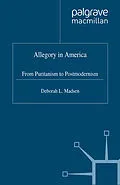Allegory in America surveys the history of American allegorical writing from the Puritans through the period of American romanticism to postmodernism. In a series of theoretical chapters the cultural function of allegory is discussed in relation to the mythology of American exceptionalism. Each theoretical chapter is followed by a chapter that analyzes a specific text or group of texts. Allegorical indeterminacy is seen to produce a literary tradition that both represents and subverts the ideals of American orthodoxy.
Autorentext
DEBORAH L. MADSEN
Inhalt
General Editor's Foreword - Preface - Acknowledgements - Introduction - Allegory in the Old World - Allegory in Colonial New England - Captivity Narratives: Mary Rowlandson, Harriet Jacobs and the Rhetoric of Exceptionalism - Allegory and American Romanticism - Nathaniel Hawthorne's Rappaccini's Daughter and the Sovereignty of the Self - The Fate of Allegory in the Twentieth Century - John Barth's Giles Goat-Boy and Post-Romantic Allegory - Conclusion - Bibliography - Index
